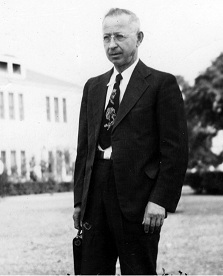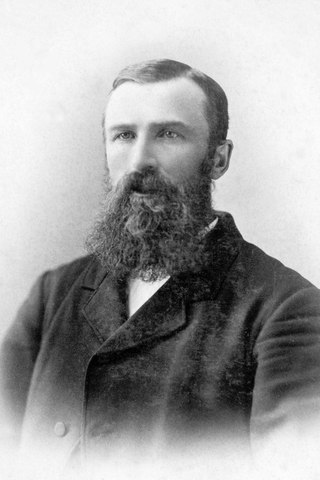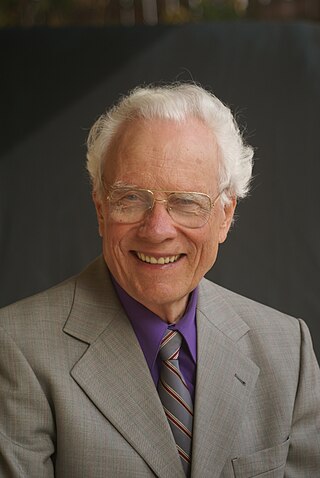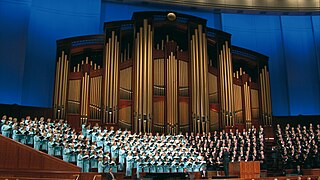Adventism is a branch of Protestant Christianity that believes in the imminent Second Coming of Jesus Christ. It originated in the 1830s in the United States during the Second Great Awakening when Baptist preacher William Miller first publicly shared his belief that the Second Coming would occur at some point between 1843 and 1844. His followers became known as Millerites. After Miller's prophecies failed, the Millerite movement split up and was continued by a number of groups that held different doctrines from one another. These groups, stemming from a common Millerite ancestor, collectively became known as the Adventist movement.

The Seventh-day Adventist Church (SDA) is an Adventist Protestant Christian denomination which is distinguished by its observance of Saturday, the seventh day of the week in the Christian (Gregorian) and the Hebrew calendar, as the Sabbath, its emphasis on the imminent Second Coming (advent) of Jesus Christ, and its annihilationist soteriology. The denomination grew out of the Millerite movement in the United States during the mid-19th century, and it was formally established in 1863. Among its co-founders was Ellen G. White, whose extensive writings are still held in high regard by the church.

The Seventh Day Adventist Reform Movement is a Protestant Christian denomination in the Sabbatarian Adventist movement that formed from a schism in the European Seventh-day Adventist Church during World War I over the position its European church leaders took on Sabbath observance and on committing Adventists to the bearing of arms in military service for Imperial Germany in World War I.

The Central Committee of the Chinese Communist Party, officially the Central Committee of the Communist Party of China, is the highest organ when the national congress is not in session and is tasked with carrying out congress resolutions, directing all party work, and representing the Chinese Communist Party (CCP) externally. It is currently composed of 205 full members and 171 alternate members. Members are nominally elected once every five years by the National Congress of the Chinese Communist Party. In practice, the selection process is done privately, usually through consultation of the CCP's Politburo and its corresponding Standing Committee.
The General Conference of Seventh-day Adventists is the governing organization of the Seventh-day Adventist Church. Its headquarters is located in Silver Spring, Maryland and oversees the church in directing its various divisions and leadership, as well as doctrinal matters.

The Seventh-day Adventist Church had its roots in the Millerite movement of the 1830s to the 1840s, during the period of the Second Great Awakening, and was officially founded in 1863. Prominent figures in the early church included Hiram Edson, Ellen G. White, her husband James Springer White, Joseph Bates, and J. N. Andrews. Over the ensuing decades the church expanded from its original base in New England to become an international organization. Significant developments such the reviews initiated by evangelicals Donald Barnhouse and Walter Martin, in the 20th century led to its recognition as a Christian denomination.

The Shepherd's Rod or Davidian Seventh-day Adventists is a movement within Seventh-day Adventism. It was founded in 1929 by Victor Houteff. He joined the Seventh-day Adventist Church in 1919 and was later excommunicated from the church in 1930 for promoting "heretical" doctrines that he claimed were new revelations from God to further Adventist theology.
The theology of the Seventh-day Adventist Church resembles early Protestant Christianity, combining elements from Lutheran, Wesleyan-Arminian, and Anabaptist branches of Protestantism. Adventists believe in the infallibility of the Scripture's teaching regarding salvation, which comes from grace through faith in Jesus Christ. The 28 fundamental beliefs constitute the church's current doctrinal positions, but they are revisable under the guidance of the Holy Spirit, and are not a creed.
The 1888 Minneapolis General Conference Session was a meeting of the General Conference of Seventh-day Adventists held in Minneapolis, Minnesota, in October 1888. It is regarded as a landmark event in the history of the Seventh-day Adventist Church. Key participants were Alonzo T. Jones and Ellet J. Waggoner, who presented a message on justification supported by Ellen G. White, but resisted by leaders such as G. I. Butler, Uriah Smith and others. The session discussed crucial theological issues such as the meaning of "righteousness by faith", the nature of the Godhead, the relationship between law and grace, and Justification and its relationship to Sanctification.

The 1919 Bible Conference was a Seventh-day Adventist Church conference or council held from July 1 to August 9, 1919, for denominational leaders, educators, and editors to discuss theological and pedagogical issues. The council was convened by the General Conference Executive Committee led by A. G. Daniells, the president of the General Conference. The meetings included the first major discussion of the inspiration of Ellen G. White's writings after her death in 1915, and the far-reaching theological scope of the discussions would generate considerable controversy.

Ole Andres Olsen was a Seventh-day Adventist minister and administrator. He was General Conference president of the Seventh-day Adventist church organization globally from 1888 to 1897.

Alonzo Trévier Jones was a Seventh-day Adventist known for his impact on the theology of the church, along with friend and associate Ellet J. Waggoner. He was a key participant in the 1888 Minneapolis General Conference Session regarded as a landmark event in the history of the Seventh-day Adventist Church.
This article describes the relationship between the Seventh-day Adventist Church and other Christian denominations and movements, and other religions. Adventists resist the movement that advocates their full ecumenical integration into other churches because they believe such a transition would force them to renounce their foundational beliefs and endanger the distinctiveness of their religious message. According to one church document,
Generation of Youth for Christ, formerly the General Youth Conference - not to be mistaken for Adventist Young Professionals (AYP), is an annual conference and expression of Adventist theology and 28 Fundamental Beliefs, which organizes and coordinates Bible studies, online sermons, regional youth conferences, mission trips, global networking opportunities for young people, week of prayers and youth camp meetings. It began with a small group of Korean students studying their Bibles together all night. It developed through middle-of-the-night text-messaging between two university students, one in Massachusetts, the other in California. They decided to call people together for a small conference in the woods of California. At that first conference, held in 2002, 200 people were invited; 400 attended. Since then, the popularity of the conventions has grown, and even the President of the Seventh-day Adventist Church, Ted N. C. Wilson has attended and praise the conventions. It has sermons that have been published in hardcover and the 2010 convention registered 5,100 participants.
Seventh-day Adventist Kinship International is a support organization that provides a spiritual and social community to current and former Seventh-day Adventists who are lesbian, gay, bisexual, transgender, asexual and/or intersex (LGBTI), and have felt hurt or rejected because of their sexual orientation and/or gender identity. SDA Kinship offers them the compassion and support perceived to not be available within the organized Adventist Church.
The International Missionary Societyof Seventh-Day Adventist Church Reform Movement (IMSSDARM) is an independent Protestant Christian
The True and Free Seventh-day Adventists (TFSDA) are a splinter group formed as the result of a schism within the Seventh-day Adventist Church in Europe during World War I over the position its European church leaders took, whose most well known leader was Vladimir Shelkov. TFSDA members are part of the Sabbatarian adventist movement, and believe that as a result of the decisions the European church leaders took, the Seventh-day Adventist Church had strayed from her Pillars of Adventism or foundational pillars of belief.

Theodore Norman Clair "Ted N. C." Wilson is an ordained minister of the Seventh-day Adventist Church and currently serves as the President of the General Conference, the governing organization of the worldwide Seventh-day Adventist Church. He was first elected for the period 2010-2015, and was reelected for the period 2015-2020. During the 61st General Conference Session, on June 6, 2022, he was once again elected as president a term that would extend until the year 2025. He was chosen as one of the General Vice Presidents of the Adventist Church in 2000 during the General Conference Session in Toronto. His 36 years of denominational service include administrative and executive roles in the Mid-Atlantic United States, Africa, and Russia. Wilson is the son of former General Conference President Neal C. Wilson, who served in the position from 1979 to 1990.

Mikhail Petrovich Kulakov was a Russian adventist pastor, social and religious activist, and Protestant Bible scholar and translator. He was co-founder of the Russian Branch of the International Association for Religious Freedom (1992), founder of the Institute for Bible Translation in Zaoksky, an honorary board member of the Russian Bible Society, and the head of the Church of Seventh-day Adventists in the Soviet Union (1990—1992). Kulakov's work on translating the Bible into modern Russian language has been lauded by biblical scholars, philologists, theologians and various representatives of Orthodox and Protestant churches in Russia.

The General Conference is a biannual gathering of members of the Church of Jesus Christ of Latter-day Saints, held every April and October at the Conference Center in Salt Lake City, Utah. During each conference, church members gather in a series of two-hour sessions to listen to the faith's leaders.











